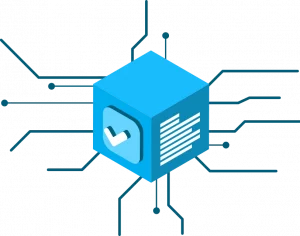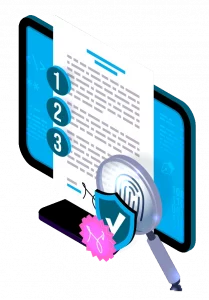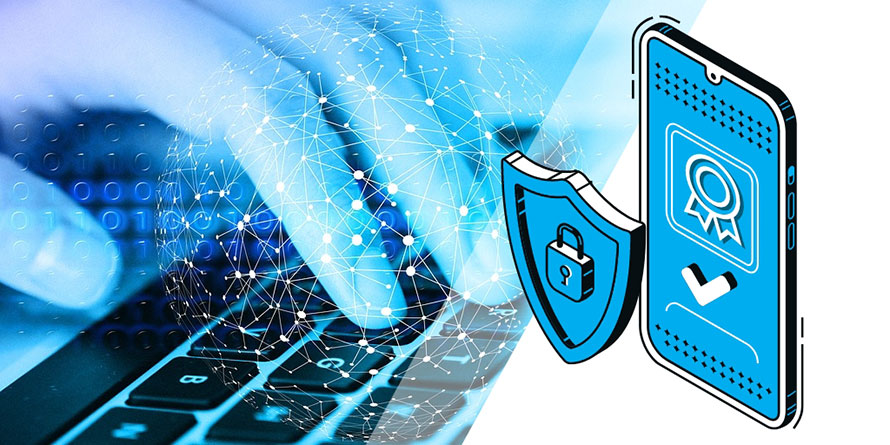Introduction to Digital Identities and Verifiable Credentials
In our digitally driven world, personal and official documents are increasingly becoming digital. From identity cards to academic degrees, our most important credentials are transitioning from paper to pixels. However, there’s a critical challenge in this digital transition: ensuring these digital documents are authentic and tamper-proof. This is where the concept of “verifiable credentials” (VCs), underpinned by blockchain technology, comes into play.
Understanding Verifiable Credentials (VCs)

- Digitizing Documents: The Need for VCs. The digitization of administrative and professional documents has necessitated a system that can unequivocally confirm the authenticity of digital information. VCs serve this purpose. They are digital equivalents of physical credentials, issued by a credible entity and stored on a blockchain. This method guarantees that the information is secure, verifiable, and immutable.
- The Role of Blockchain in VCs Blockchain, a decentralized and distributed ledger technology, is the backbone of VCs. It ensures the integrity and security of digital credentials, making them resistant to fraud and unauthorized alteration.
The European Blockchain Services Infrastructure (EBSI)
The European Commission is pioneering the EBSI, a blockchain-based initiative aimed at standardizing and securing digital credentials across Europe. This infrastructure focuses on creating a harmonized framework for file formats, cryptographic private keys, identity verification, and more, ensuring seamless and secure cross-border services.
Components of VCs
Cryptographically secured, VCs typically consist of three key elements:
- Metadata: This includes encrypted details about the credential, such as the issuer’s identity, the holder’s information, issue and expiry dates, and so on. The encryption is done using cryptographic signatures, ensuring the digitally signed credential’s validity and security.
- Declaration: This part contains the specific data the holder wishes to share, like their identity, qualifications, or other personal details.
- Proof: It involves data that validates the holder’s identity and enables verifiers to authenticate the shared information.

For a certificate to be recognized as a VC, it must conform to the specific standards of the World Wide Web Consortium, or “W3C”, in its W3C Verifiable Credentials Data Model specification.
How VCs Work
- The Issuer: Entities like government departments, educational institutions, or businesses, authorized to issue VCs.
- The Holder: Typically an individual or an organization that owns and controls the VC.
- The Verifier: Any entity that requests to verify the authenticity of a VC.
Blockchain’s Role in VCs
Blockchain technology is central to the operation of VCs. It securely stores all proofs of authenticity and identifiers, ensuring their permanence and preventing any unauthorized alteration. This robust technology is not only applicable to academic credentials but also extends to various sectors like finance and supply chain management.

Thanks to blockchain technology, various users can hold digital certificates that are always available to them. The supporting documents, proofs and university degrees can therefore be easily shared by the user, for example, via the web, or using a “digital wallet”, which is a decentralized application allowing each individual user to manage their own credentials.
Decentralized Identifiers (DIDs) in VCs

In the VC system, DIDs play a crucial role. They are secure identifiers for users, ensuring identity verification when a VC is requested or shared. DIDs, backed by advanced cryptography, are often registered in a trusted directory for security and ease of access.
Selective Disclosure and Privacy
One of the strengths of VCs is the control they offer users over their personal information. Users can selectively disclose information, deciding what to share and with whom, thanks to technologies like “zero-knowledge proof.”
BCdiploma’s Role in Digital Credentials
BCdiploma is at the forefront of utilizing blockchain technology for digital degrees. It provides educational institutions with a secure and efficient method for issuing and verifying digital diplomas. This approach not only ensures the authenticity of the credentials but also significantly reduces administrative burdens.
Want to know more ? Discover our use case of digital certificates and verifiable credentials on the blockchain with the University of Lilles.
BCdiploma’s solutions
One of the possible applications of blockchain technology is the creation of digital degrees. BCdiploma is working to provide universities and education and training institutions with the key to a new method for issuing tamper-proof and quickly accessible diplomas.
This new model of issuing a digital diploma brings significant time savings, by putting an end to the need for a university or similar institution to process and mail duplicates and other formal certificates.
The implementation of such a service, that respects the VCs specification and standards, offers the university or establishment new perspectives :
- the creation of a digital diploma in which everyone, the issuer, the holder, and the verifier, has total trust;
- the optimization of web based certificate applications;
- the storage of the various data in a protected digital space;
- the ability to present any proof requested by another institution in very little time;
- the guarantee against loss or theft of the documents.
VCs represent a significant leap in securing and managing digital identities and documents. As the world continues to digitize, technologies like blockchain and systems like EBSI are vital in maintaining the integrity and trustworthiness of our most important credentials.
Bring your establishment up to date by adopting this innovative, more efficient and more reliable system!
